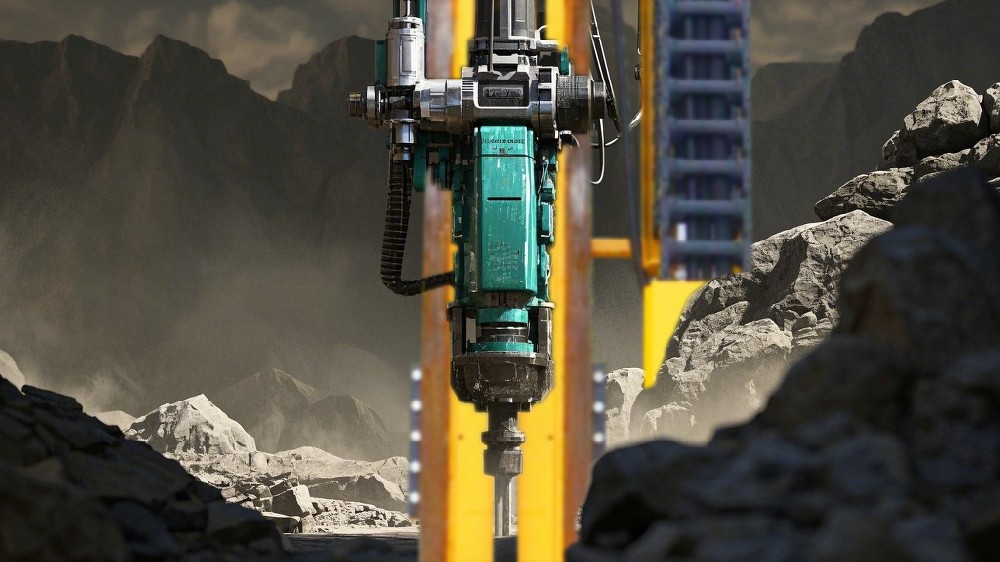
In the fields of mining, tunnel excavation and other engineering, the efficient operation of a rock drill (key part of the drill rig) plays a vital role in projects construction.
In order to improve the efficiency of the operation, a complete set of guidelines for the efficient use of rock drill is given by the engineers,
Preparation is the basis for the performance of a rock drill. Firstly, unseal a new rock drill, to disassemble and clean the internal high-viscosity anti-rust grease, apply lubricating oil to each moving part, and connect the compressed air pipeline for a small wind pressure test. The automatic oiler should be filled with 20#, 30# or 40# engine oil to ensure the rock drill’s clean. The wind pressure should be stable at 0.4-0.6MPa, and the water pressure should be maintained at 0.2-0.3MPa. Secondly, use a qualified drill rod to clean the pipeline. Thirdly, insert the shank to rotate smoothly, to tighten the drill rod. Finally, check the status of the propeller, air leg etc. Please note that the hydraulic rock drill should ensure the hydraulic system is well sealed.
Fine control is the key to enhancing efficiency. Run at low speed during the hole punching, and increase the speed after the hole depth reaches 10-15mm. Keep the drill rod feeding in a straight line. Adjust the shaft’s pushing force so as to avoid equipment abnormalities caused by insufficient or excessive pushing force. When the shaft is stuck, reduce the pushing force firstly, and stop the machine if it is ineffective. Use a wrench to assist in turning the drill rod and remove the jamming by cooperating with the medium pressure. Pay close attention to the powder discharge status to ensure that the mud flows out normally. Monitor the lubrication system to ensure that the oil injection amount is appropriate. Pay attention to the sound of the equipment, observe the operation status, and replace the failed drill rod in time. When operating the upward rock drill, the air supply of the gas leg must be accurately controlled to avoid weak areas of the rock formation and residual holes to prevent geological disasters. Make full use of the drilling mode to adapt to the operation of the rock face with a large inclination angle.
Equipment maintenance is the guarantee of continuous and efficient operation. Perform regular and comprehensive inspections according to the equipment manual, including component wear, loose fasteners, hydraulic and lubrication system, etc. Keep the equipment clean, clean rock powder and oil stains regularly, and lubricate according to the cycle and lubrication points. Replace worn parts in time according to the usage and use reliable quality accessories. When not in use for a long time, the rock rill should be stored in a dry, ventilated environment without corrosive gases.
By following these points, enterprises could significantly improve the efficiency of rock drill, reduce equipment loss, and ensure the safe and efficient progress of the project.